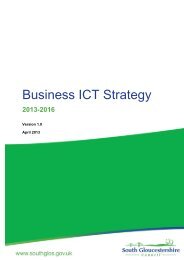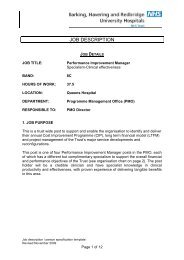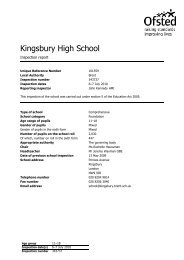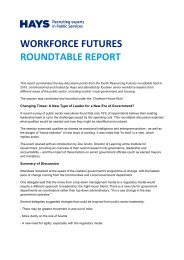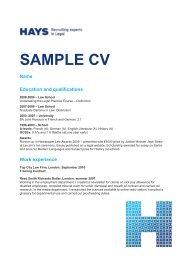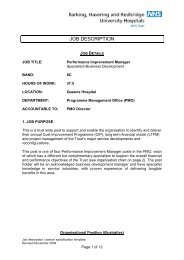RESOURCING AND TALENT PLANNING - Hays
RESOURCING AND TALENT PLANNING - Hays
RESOURCING AND TALENT PLANNING - Hays
You also want an ePaper? Increase the reach of your titles
YUMPU automatically turns print PDFs into web optimized ePapers that Google loves.
2012<br />
Table 13: Changes to intake (% of those with a graduate recruitment programme)<br />
All<br />
Manufacturing<br />
and production<br />
Private<br />
services<br />
Increased our intake in the last 12 months 31 44 32 10<br />
Reduced our intake in the last 12 months 20 15 22 20<br />
Our intake has remained the same 48 41 47 70<br />
Base: 163<br />
Not-for-profit sector excluded due to inadequate sample size<br />
Public<br />
sector<br />
Figure 1 suggests that the use of graduate<br />
programmes has increased in larger organisations<br />
(more than 1,000 employees) compared with<br />
previous years. Their use has also increased in the<br />
manufacturing and production sector over the last<br />
few years (Table 12). This sector was also most likely<br />
to report they had increased their intake in the last<br />
12 months (Table 13) and least likely to report they<br />
had reduced their intake.<br />
Last year we reported that half of public sector<br />
organisations with a graduate programme had<br />
reduced their intake. This year the reductions<br />
have tailed off, with most reporting their intake<br />
has remained the same, although public sector<br />
organisations were least likely to report they have<br />
increased their intake. 7 Changes to intake were not<br />
related to the size of the organisation.<br />
The vast majority of respondents from organisations<br />
without a recruitment programme for graduates<br />
reported that their organisations had never had such<br />
a programme or not had one for some time (98%),<br />
with no significant differences across sectors or size<br />
of organisation.<br />
The impact of tuition fees<br />
Two-fifths of organisations (40%) are concerned<br />
that the increase in university tuition fees will make<br />
it harder to get the skills they need. Organisations<br />
with graduate recruitment schemes are most likely<br />
to be concerned (48% compared with 36% of<br />
organisations without such schemes). 8<br />
Initiatives to develop skills<br />
Many organisations operate their own initiatives<br />
to develop skills (Table 14). Apprenticeships are<br />
offered by two-fifths of organisations overall, with<br />
a further 14% planning to introduce them in the<br />
next 12 months. They are particularly favoured in<br />
the manufacturing and production sector and the<br />
public sector. 9<br />
Most organisations with apprenticeship schemes<br />
report they are at least somewhat effective in<br />
developing the skills their organisations need, with<br />
two-fifths overall (40%) reporting they are very<br />
effective (53% in manufacturing and production)<br />
and only 7% reporting they are not very effective.<br />
There is more room for improvement in the public<br />
sector, however, where only one in four (27%) report<br />
their schemes are very effective and one in ten<br />
(10%) report they are not very effective. Nearly half<br />
(46%) of organisations across all sectors report that<br />
if their organisation offered more apprenticeship<br />
programmes it would help them get the skills they<br />
need (48% of those with recruitment difficulties due<br />
to skills shortages). This rises to 54% of those with<br />
more than 250 employees (35% of those with fewer<br />
than 250 employees). 10<br />
<strong>RESOURCING</strong> <strong>AND</strong> <strong>TALENT</strong> <strong>PLANNING</strong> 2012<br />
17




